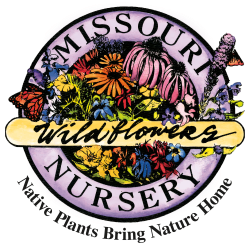Wild Hyacinth is an ephemeral species that blooms in late spring and is often dormant by mid summer. Flower color varies from pale blue or lilac to nearly white. It tolerates a range of conditions and can be found from rich woodlands to limestone glades. "April showers" help this plant thrive during its growing season, and its ephemeral nature gives it the ability to survive periods of drought during summer.
The bulbs of mature wild hyacinths are usually no larger than three centimeters and were once widely used as a food source by native Americans and early settlers. However, eating the bulbs is now strongly discouraged as there is a poisonous look-alike: the Death Camas, Zigadenus nuttallii. It is also sometimes confused with its less-common, close relative Camassia angusta. Dormant bulbs should be planted 2 to 4 inches deep.
The flowers attract a number of nectar-seeking pollinators--primarily bees, flies, and wasps. While deer may occasionally munch on the plant, the damage is mostly aesthetic as the nutrient-rich bulb is usually pretty deep below ground and can recover from the attack. This plant is fairly slow to reach maturity.
Uses: Pollinators, cut flowers, drought tolerant, edible (not recommended), juglone tolerant
Bloom time: April to May
Height: 15 to 30 inches
Space: 4 to 6 inches
Sun: Full sun to medium shade
Moisture: Dry to average
Seed: Seed sown outdoors by mid January should germinate with warm temperatures in April or May. It likely needs at least one or two months of cold-moist stratification.
- 200 seeds per packet
- 8,000 seeds per ounce
- 1 ounce per 260 square feet (yields ~30 seeds per square foot)









